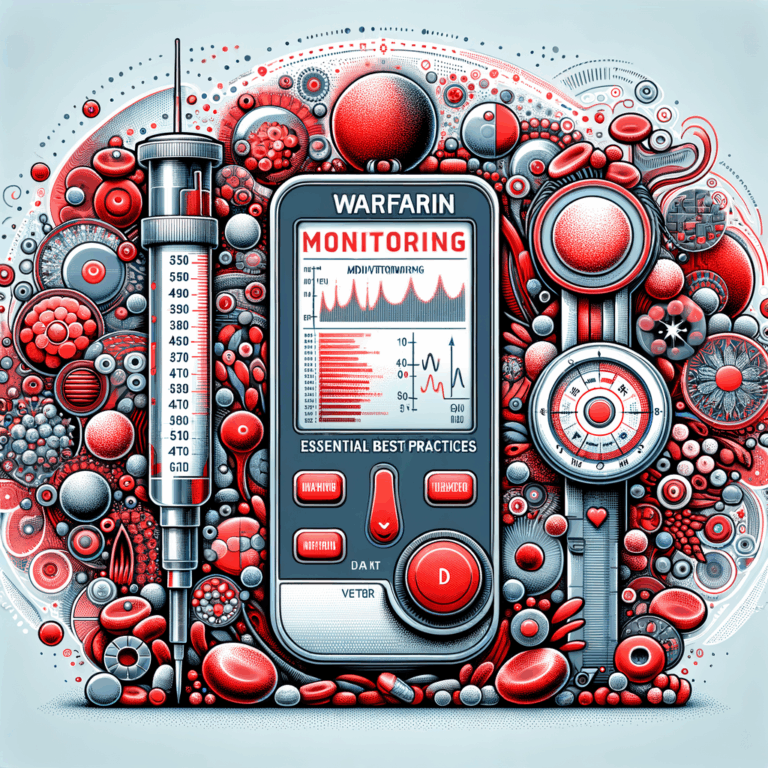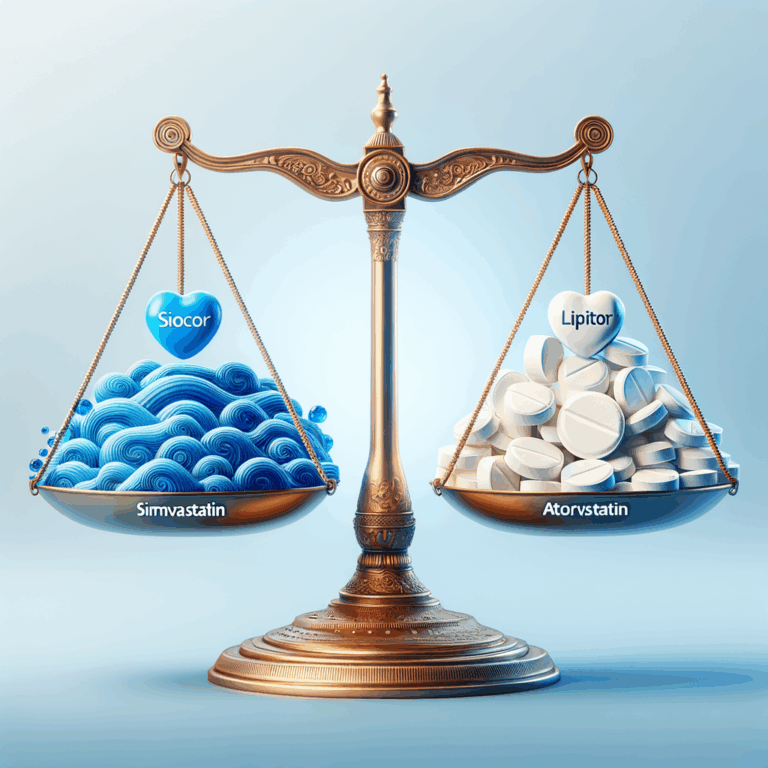
- Why Empagliflozin Matters for Heart Health
- What Empagliflozin Is and How It Works
- Key Clinical Trials Supporting Heart Benefits
- Main Empagliflozin Heart Benefits
- Reduced Heart Failure Hospitalizations
- Lower Cardiovascular Mortality
- Blood Pressure and Weight Benefits
- Kidney Protection and Cardio-Renal Link
- Who Benefits Most from Empagliflozin?
- How Empagliflozin Fits into Heart Failure Treatment
- Common Side Effects and How to Manage Them
- Euglycemic Diabetic Ketoacidosis (DKA)
- Amputations and Fracture Risk
- Who Should Avoid Empagliflozin?
- Practical Tips for Patients and Clinicians
- Cost, Access, and Insurance Considerations
- Real-World Evidence and Long-Term Outcomes
- How Empagliflozin Compares to Other SGLT2 Inhibitors
- Patient Stories: How Empagliflozin Changes Lives
- Monitoring and Follow-Up Schedule
- Lifestyle Measures That Boost Benefits
- Dietary Tips
- Exercise and Physical Activity
- Empagliflozin in Special Populations
- Future Directions and Research
- Quick Reference Table: Empagliflozin Heart Benefits at a Glance
- How to Talk to Your Doctor About Empagliflozin
- Summary: Why the Heart Benefits Are “Stunning”
- Frequently Asked Questions (FAQs)
- References
Why Empagliflozin Matters for Heart Health
Empagliflozin has changed how clinicians think about heart care. Initially, doctors used it for blood sugar control in type 2 diabetes. Soon, researchers noticed strong heart benefits. As a result, cardiology now embraces this drug in many treatment plans.
Importantly, Empagliflozin Heart Benefits extend beyond glucose lowering. The drug reduces hospitalizations for heart failure. It also lowers the risk of cardiovascular death in high-risk patients. Thus, patients and clinicians need to understand its role and outcomes.
What Empagliflozin Is and How It Works
Empagliflozin belongs to a class called SGLT2 inhibitors. These drugs block sodium-glucose transport proteins in the kidney. Consequently, they force the body to excrete excess glucose through urine. This lowers blood sugar without increasing insulin.
Beyond glucose, empagliflozin affects fluid balance and blood pressure. It reduces sodium reabsorption and increases diuresis. Therefore, it eases strain on the heart. In addition, it may improve heart muscle metabolism and reduce inflammation. These mechanisms likely explain its heart benefits.
Key Clinical Trials Supporting Heart Benefits
Several major clinical trials demonstrate concrete results. EMPA-REG OUTCOME was the first landmark study to show cardiovascular benefits. It enrolled thousands of patients with type 2 diabetes and high cardiovascular risk. The trial reported lower rates of cardiovascular death and hospitalization for heart failure.
Following EMPA-REG, other trials expanded evidence to non-diabetic patients too. Studies like EMPEROR-Reduced and EMPEROR-Preserved focused on heart failure patients. These trials showed reduced heart failure hospitalizations and improved outcomes across a range of ejection fractions. Together, they build a strong case for empagliflozin in heart care.
Main Empagliflozin Heart Benefits
Empagliflozin delivers several powerful benefits for the heart. First, it cuts the risk of hospitalization for heart failure. This outcome can dramatically improve quality of life. Second, it decreases cardiovascular death in certain high-risk groups. This effect saves lives.
Furthermore, the drug lowers blood pressure modestly. Even small drops can reduce heart strain. Empagliflozin also helps preserve kidney function. Since heart and kidney health are tightly linked, this effect supports overall cardiovascular outcomes. Ultimately, these benefits combine to produce robust, clinically meaningful results.
Reduced Heart Failure Hospitalizations
Heart failure hospitalizations fall significantly with empagliflozin. Trials show roughly a 30% relative reduction in many settings. This benefit appears in both diabetic and non-diabetic patients. In practical terms, fewer admissions means less disruption and fewer complications.
Because empagliflozin reduces fluid overload, it helps control symptoms. Patients often report improved breathing and energy. As a result, they can perform daily activities with less fatigue. Clinicians celebrate these outcomes because they reflect real-world value.
Lower Cardiovascular Mortality
Empagliflozin lowers cardiovascular death, particularly in high-risk diabetic patients. EMPA-REG demonstrated a clear benefit in this group. The reduction in cardiovascular mortality remains one of the most compelling findings. It established empagliflozin as a life-saving therapy for many.
Subsequent research suggests this benefit may extend beyond diabetes. Still, absolute risk reductions vary with patient profiles. Clinicians consider each patient’s baseline risk when estimating individual benefit. Nevertheless, the mortality findings continue to drive guideline recommendations.
Blood Pressure and Weight Benefits
Empagliflozin produces modest blood pressure reductions. Usually, patients see drops of 3–5 mm Hg systolic. Small changes still produce meaningful cardiovascular gains over time. The drug also promotes slight weight loss through calorie loss in urine.
Weight loss improves metabolic health and eases cardiac stress. Even a few kilograms make a difference for many patients. Combined with lifestyle changes, empagliflozin enhances heart-friendly habits and results.
Kidney Protection and Cardio-Renal Link
Kidney protection ranks among the most important secondary benefits. Empagliflozin slows progression of chronic kidney disease. It reduces albuminuria and preserves glomerular filtration rate. Because kidney dysfunction worsens heart outcomes, renal protection amplifies cardiac gains.
This cardio-renal synergy matters clinically. Patients with both heart and kidney disease face higher risks. Empagliflozin addresses both organs simultaneously. Therefore, it supports a holistic approach to chronic disease management.
Who Benefits Most from Empagliflozin?
Not every patient sees equal benefit. Those with type 2 diabetes and established cardiovascular disease benefit the most. High baseline risk yields greater absolute reductions in events. Similarly, patients with symptomatic heart failure show strong improvements.
People with chronic kidney disease also benefit. Empagliflozin slows renal decline and reduces renal events. However, clinicians must consider individual kidney function before starting the drug. Overall, the highest-impact candidates have multiple risk factors or established disease.
How Empagliflozin Fits into Heart Failure Treatment
Guidelines now include empagliflozin as a core heart failure therapy. It works alongside beta-blockers, ACE inhibitors, MRAs, and ARNI therapy. Because it offers unique mechanisms, it provides additive benefits. Clinicians often initiate empagliflozin early in the treatment pathway.
In practice, doctors start empagliflozin to reduce hospitalizations and improve outcomes. They monitor blood pressure, kidney function, and electrolytes. When combined with other therapies, patients enjoy improved symptoms and survival. Importantly, the drug simplifies care because it requires once-daily dosing.
Common Side Effects and How to Manage Them
Most patients tolerate empagliflozin well. Yet, the drug can cause side effects. The most common issues include genital fungal infections and urinary tract infections. These issues occur because the drug increases urinary glucose.
To reduce risk, advise personal hygiene and prompt treatment. Clinicians may pause therapy during acute illness or planned surgery. Rarely, the drug can cause volume depletion and low blood pressure. Monitor elderly patients and those on diuretics closely. Educate patients to report dizziness or fainting.
Euglycemic Diabetic Ketoacidosis (DKA)
Although rare, empagliflozin can trigger euglycemic DKA. This form of DKA occurs with normal or mildly elevated blood glucose. It appears more often in patients with insulin deficiency or acute illness. Clinicians must watch for nausea, vomiting, and abdominal pain.
Patients should stop empagliflozin before major surgery or when they become severely ill. Providers should also avoid starting the drug in patients prone to ketosis. Quick recognition and treatment of DKA prevent serious complications.
Amputations and Fracture Risk
Some SGLT2 inhibitors raised concerns about limb amputations and fractures. Empagliflozin showed mixed data initially. Later analyses did not confirm a clear causal link. Still, clinicians should assess foot health in high-risk patients. They should also encourage fall prevention and bone health measures.
Who Should Avoid Empagliflozin?
Some patients should avoid empagliflozin. People with type 1 diabetes face higher DKA risk. Pregnant and breastfeeding women should not use it. Also, severe kidney impairment limits the drug’s effectiveness and safety. Clinicians usually avoid empagliflozin in those with eGFR below recommended thresholds.
Additionally, patients with recurrent genital infections may find the drug intolerable. Those with unstable blood pressure or severe volume depletion need caution. Assess each patient’s risks before starting therapy.
Practical Tips for Patients and Clinicians
Start with baseline labs and vitals. Check kidney function, electrolytes, and blood pressure. Educate patients about side effects, especially genital infections. Encourage hydration and good hygiene. Advise patients to stop the drug when they are acutely ill or before surgery.
When initiating therapy, use the lowest effective dose and titrate as needed. Combine empagliflozin with other guideline-directed heart failure drugs. Monitor kidney function early and periodically thereafter. Communicate clearly about warning signs that require urgent care.
Cost, Access, and Insurance Considerations
Cost can affect access. Empagliflozin is patented and may carry a high list price. Many insurers cover it for diabetes and heart failure. Still, prior authorization sometimes delays access. Manufacturers often provide savings programs or copay cards.
Patients should explore formularies and assistance programs. Clinicians can help by documenting medical necessity. Pharmacists also help identify lower-cost alternatives or patient support options. With advocacy, most eligible patients can obtain therapy.
Real-World Evidence and Long-Term Outcomes
Real-world studies confirm trial results. They show reductions in hospitalizations and improved survival in routine care. Observational data also highlight safety across diverse populations. These findings strengthen confidence in empagliflozin’s heart benefits.
Long-term data continue to accumulate. Ongoing registries and follow-up studies will evaluate durability and rare risks. So far, the evidence suggests sustained benefit and manageable risk. Clinicians will refine patient selection as we learn more.
How Empagliflozin Compares to Other SGLT2 Inhibitors
Multiple SGLT2 inhibitors show cardiovascular benefits. Empagliflozin stands out for strong mortality data in EMPA-REG. Other agents like dapagliflozin and canagliflozin also reduce heart failure hospitalizations. Each drug has nuanced differences in indications and evidence.
Clinicians choose among agents based on patient profile and local access. For example, empagliflozin has robust data in high-risk diabetic patients. Dapagliflozin has strong heart failure evidence across ejection fractions. Ultimately, all effective SGLT2 inhibitors provide meaningful heart benefits.
Patient Stories: How Empagliflozin Changes Lives
Patients often report improved mobility and fewer hospital stays. One patient with advanced heart failure regained energy and returned to gardening. Another reduced frequent breathing episodes and resumed daily walks. These personal outcomes illustrate the drug’s real-world impact.
Family members also notice differences. Caregivers describe fewer emergency visits and less anxiety. These improvements translate into better quality of life for whole households. As a result, empagliflozin matters not just clinically but personally.
Monitoring and Follow-Up Schedule
Establish a clear monitoring plan at initiation. Check renal function within 1–2 weeks of starting therapy. Reassess electrolytes and blood pressure at the same interval. Then monitor every 3–6 months based on stability.
Educate patients to track symptoms like dizziness, fainting, or urinary problems. Schedule follow-up visits to review adherence and side effects. When needed, adjust other medications to reduce blood pressure or volume depletion risk.
Lifestyle Measures That Boost Benefits
Empagliflozin works best with lifestyle changes. Encourage a heart-healthy diet, regular exercise, and smoking cessation. Weight control and blood pressure management amplify drug effects. Patients who adopt healthy habits often see the greatest gains.
Behavioral changes also reduce risk factors for kidney disease and diabetes. As a result, empagliflozin becomes part of a broader prevention strategy. Clinicians should combine medication with practical lifestyle counseling.
Dietary Tips
Recommend a Mediterranean-style diet rich in fruits and vegetables. Reduce sodium to help control blood pressure and fluid retention. Limit simple sugars and high-calorie processed foods.
Also, advise adequate fluid intake unless contraindicated. Proper hydration lowers the risk of volume depletion. Balance dietary advice with each patient’s kidney status.
Exercise and Physical Activity
Suggest at least 150 minutes of moderate activity per week if possible. Encourage walking, cycling, or swimming. Strength training twice weekly helps maintain muscle mass.
Start slowly for deconditioned patients. Increase intensity gradually. Exercise improves endurance and reduces heart failure symptoms.
Empagliflozin in Special Populations
Older adults need careful evaluation. They often face dehydration and orthostatic issues. Start at recommended doses and monitor closely. Adjust diuretics and blood pressure meds if necessary.
Patients with chronic kidney disease benefit but require dose assessment. Many trials included patients with eGFR down to moderate ranges. However, efficacy declines with severe impairment. Check current labeling and guidelines for eGFR cutoffs.
Future Directions and Research
Researchers continue to explore new uses for empagliflozin. Trials are testing its role in acute heart failure and earlier preventive care. Scientists also study metabolic, inflammatory, and cardiac remodeling effects. These studies may broaden indications and refine patient selection.
Additionally, combination strategies aim to maximize patient outcomes. Combining empagliflozin with other novel agents may yield additive benefits. Ongoing research will clarify optimal sequencing and combination therapy.
Quick Reference Table: Empagliflozin Heart Benefits at a Glance
| Benefit | Clinical Impact | Evidence |
|---|---|---|
| Reduced heart failure hospitalization | Fewer admissions, improved symptoms | EMPA-REG, EMPEROR trials |
| Lower cardiovascular mortality | Fewer deaths in high-risk patients | EMPA-REG OUTCOME |
| Modest BP reduction | Less cardiac strain | Multiple RCTs and meta-analyses |
| Weight loss | Improved metabolic profile | Clinical trials and real-world data |
| Renal protection | Slower CKD progression | EMPA-REG and renal substudies |
How to Talk to Your Doctor About Empagliflozin
Prepare by noting your medical history and medicines. Ask about risks and expected benefits for your situation. Discuss insurance coverage and costs. Also, clarify monitoring and follow-up steps.
Ask about how empagliflozin interacts with your other drugs. For instance, check interactions with diuretics and blood pressure meds. Finally, ask for written instructions about when to stop the drug during illness or surgery.
Summary: Why the Heart Benefits Are “Stunning”
Empagliflozin delivers powerful, reproducible benefits for heart patients. It cuts heart failure hospitalizations and lowers CV death in many patients. It also protects kidneys and improves quality of life. These combined effects changed treatment guidelines and everyday practice.
Because it works across multiple pathways, empagliflozin offers unique value. Clinicians can add it to standard regimens to boost outcomes. For eligible patients, the drug often brings clear, tangible improvements.
Frequently Asked Questions (FAQs)
1. What makes empagliflozin different from other heart medications?
– Empagliflozin reduces glucose but also lowers heart failure admissions and cardiovascular death through unique kidney and metabolic effects. It acts independently of many traditional heart drugs.
2. Can people without diabetes take empagliflozin for heart failure?
– Yes. Trials include non-diabetic heart failure patients and show benefits. Your doctor will assess suitability and kidney function first.
3. How quickly do heart benefits appear?
– Some benefits, like reduced hospitalization risk, appear within weeks to months. Mortality benefits may emerge over months to years. Individual timelines vary.
4. Is empagliflozin safe for older adults?
– Generally yes, but older adults need close monitoring for dehydration and blood pressure drops. Adjustments may be necessary if they take other diuretics.
5. How does empagliflozin affect kidney function long-term?
– It slows kidney disease progression and reduces albuminuria in many patients. However, initial small drops in eGFR can occur and need monitoring.
6. What should I do if I get a genital infection while on empagliflozin?
– Maintain good hygiene and seek prompt medical treatment. Most infections respond to antifungal therapy without stopping the drug.
7. Can empagliflozin cause low blood sugar?
– It rarely causes hypoglycemia alone. However, if combined with insulin or sulfonylureas, you may need dose adjustments.
8. Do I need to stop empagliflozin before surgery?
– Yes. Most guidelines recommend stopping it 24–72 hours before major surgery to reduce DKA risk. Follow your surgeon’s and anesthesiologist’s advice.
9. Will empagliflozin help if I only have high blood pressure but no heart disease?
– The drug lowers blood pressure modestly, but guidelines reserve it mainly for patients with diabetes, heart failure, or CKD. Discuss individual needs with your doctor.
10. Are there lifestyle changes that improve empagliflozin’s effects?
– Yes. A heart-healthy diet, regular exercise, and smoking cessation enhance benefits. Weight loss and blood pressure control further reduce risk.
References
– Zinman B, Wanner C, Lachin JM, et al. Empagliflozin, Cardiovascular Outcomes, and Mortality in Type 2 Diabetes. New England Journal of Medicine. 2015. https://www.nejm.org/doi/full/10.1056/NEJMoa1504720
– Packer M, Anker SD, Butler J, et al. Cardiovascular and Renal Outcomes with Empagliflozin in Heart Failure. New England Journal of Medicine. 2020 (EMPEROR-Reduced). https://www.nejm.org/doi/full/10.1056/NEJMoa2022190
– Packer M, McMurray JJV, Desai AS, et al. Cardiovascular and Renal Outcomes with Empagliflozin in Heart Failure with Preserved Ejection Fraction. New England Journal of Medicine. 2021 (EMPEROR-Preserved). https://www.nejm.org/doi/full/10.1056/NEJMoa2107038
– American (Incomplete: max_output_tokens)



